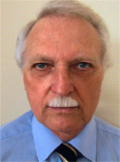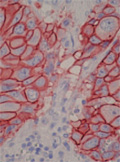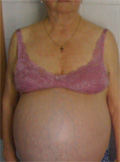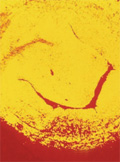The eLitMed.hu medical portal uses computer cookies for convenient operation. Detailed information can be found in the Cookie-policy.
Lege Artis Medicinae - 2010;20(06-07)
Content
[The treatment of chronic hepatitis C with peginterferon - Peginterferon alfa-2a or alfa-2b?]
[The main purpose of the treatment of patients with chronic hepatitis C is to achieve a sustained virologic remission (SVR), which means that no hepatitis C virus ribonucleic acid (HCV RNA) is detectable 24 weeks after the cessation of treatment. In patients infected by genotype 1 virus, the chance of achieving SVR by a combination treatment with peginterferon alfa-2a or alfa-2b plus ribavirin is about 40-50%. The pharmacokinetic properties of the two peginterferons are significantly different from each other. A number of clinical trials have been performed in the past eight years to clarify whether this difference influences the clinical efficiency or safety of these drugs. Several prospective, comparative studies have been completed recently. Among these, the American IDEAL study is the largest and most important one, however, the results of numberous smaller studies are also available. More than 3000 patients with genotype 1 HCV were treated in the IDEAL study and no significant difference was found in SVR rates between the peginterferon alfa-2a and alfa-2b treatment arms. However, the doses of ribavirin used in this study raise several questions in this study. In two smaller Italian studies, significantly higher SVR was achieved with peginterferon alfa-2a plus ribavarin treatment. According to a Cochrane metaanalysis, in which reviewed data of 4335 patients from eight randomized trails have been reviewed, treatment with peginterferon alfa-2a is significantly more effective. Besides efficiency, the cost/effectiveness of the two therapies were also compared in a large American study, which also showed that peginterferon alfa-2a treatment was superior to peginterferon alfa-2b treatment.]
[Future perspectives and health conditions of recently graduated physicians]
[INTRODUCTION - The purpose of our study was to survey the opinion of students graduating in 2008 at the Semmelweis University Faculty of Medicine about university education, future perspectives and physical as well as their mental health conditions. We have considered factors that might cause or might protect against burnout syndrome. METHODS - The electronic questionnaire has been sent to all graduating students and included the Beck Depression Inventory, the Hungarian version of Spielberger’s State-Trait Anxiety Inventory (STAI), which assesses anxiety, the Hungarian adaptation of the Maslach Burnout Inventory for Human Profession modified for students and the CAGE test, which evaluates alcohol consumption. The questionnaire included general questions concerning medical school education, health condition, support from the community, future perspective and livelihood. RESULTS - 31.4% of the graduating class (94 people) answered the questionnaire. These former students felt that the theoretical education at the university was of high quality; however, 61% considered the practical education insufficient. At the beginning of their careers, merely 5% of the young physicians felt well-prepared professionally. 30% of the responders reported a high degree of burnout; 59% would like to work abroad, and 26% were considering leaving the field of healthcare. A quarter of the students had psychosomatic symptoms. CONCLUSIONS - After graduating from medical school, young physicians have to face the difficulties of finding a job, an unstable livelihood and a high risk of burnout syndrome. The high percentage of young medical school graduates leaving the profession as well as the high migration rate might contribute to the growing problems of the healthcare system.]
1.
Clinical Neuroscience
Is there any difference in mortality rates of atrial fibrillation detected before or after ischemic stroke?2.
Clinical Neuroscience
Factors influencing the level of stigma in Parkinson’s disease in western Turkey3.
Clinical Neuroscience
Neuropathic pain and mood disorders in earthquake survivors with peripheral nerve injuries4.
Journal of Nursing Theory and Practice
[Correlations of Sarcopenia, Frailty, Falls and Social Isolation – A Literature Review in the Light of Swedish Statistics]5.
Clinical Neuroscience
[Comparison of pain intensity measurements among patients with low-back pain]1.
Clinical Neuroscience Proceedings
[A Magyar Stroke Társaság XVIII. Kongresszusa és a Magyar Neuroszonológiai Társaság XV. Konferenciája. Absztraktfüzet]2.
3.
Journal of Nursing Theory and Practice
[A selection of the entries submitted to the literary contest "Honorable mission: the joys and challenges of our profession" ]4.
Journal of Nursing Theory and Practice
[End of Life and Palliative Care of Newborns in the Nursing Context]5.
Journal of Nursing Theory and Practice
[Aspects of Occupational Health Nursing for Incurable Patients ]



























